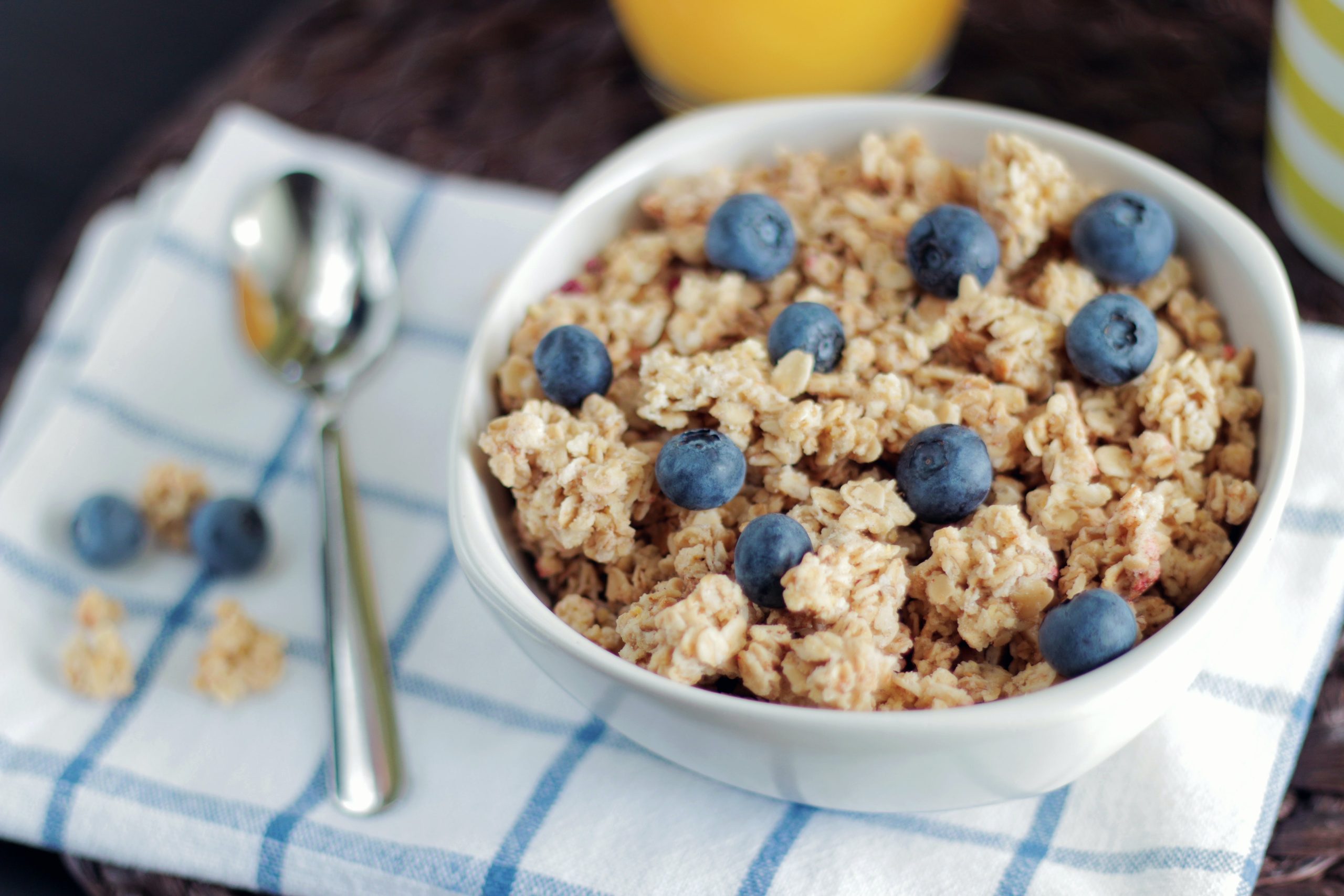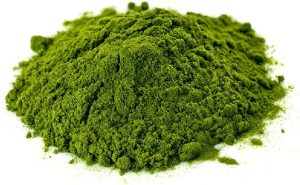
- Overview of Molybdenum
- Brief History of Molybdenum
- Functions of Molybdenum
- Recommended Daily Intake (RDI), Recommended Dietary Allowance (RDA), Adequate Intake (AI), or Reference Nutrient Intake (RNI) for Molybdenum
- Deficiency of Molybdenum
- Food Sources of Molybdenum and Where to Get It From
- Molybdenum and Its Interaction with Other Medications
- Websites and Articles to Delve into the Benefits of Molybdenum
- Disclaimer
Overview of Molybdenum
Molybdenum is an essential trace element that plays a vital role in human health. Acting as a cofactor for enzymes, particularly those involved in sulfur metabolism, molybdenum contributes to the body’s ability to detoxify harmful substances and metabolize certain amino acids. Molybdenum-dependent enzymes are crucial for the conversion of sulfite to sulfate, a process integral to cellular function.
While molybdenum deficiency is rare, it can lead to severe neurological and developmental issues. Molybdenum-rich foods, including legumes, grains, and leafy vegetables, are essential for maintaining optimal levels. Beyond its significance in human biology, molybdenum’s therapeutic applications are limited, and its main focus remains on supporting fundamental biochemical processes.
Brief History of Molybdenum
Molybdenum’s role in medicine is primarily indirect, as it is an essential trace element crucial for human health due to its presence in certain enzymes. Here’s a brief history of molybdenum’s involvement in medicine:
- Discovery of Molybdenum in Enzymes:
- Molybdenum’s importance in biological systems was recognized as researchers delved into the functions of enzymes. It was identified as a cofactor in molybdenum-containing enzymes, particularly those involved in sulfur metabolism.
- Sulfite Oxidase and Xanthine Oxidase:
- Molybdenum is a critical component of enzymes like sulfite oxidase and xanthine oxidase. Sulfite oxidase is involved in the detoxification of sulfite to sulfate, while xanthine oxidase participates in purine metabolism.
- Biochemical Processes:
- Molybdenum-dependent enzymes play key roles in various biochemical processes, including the metabolism of certain amino acids and the breakdown of purines. These processes are fundamental to cellular function and contribute to overall health.
- Nutritional Significance:
- Molybdenum became recognized as an essential nutrient for humans, emphasizing its importance in maintaining optimal health. It is obtained through dietary sources, including legumes, grains, and leafy vegetables.
- Molybdenum Deficiency:
- While molybdenum deficiency is rare, its association with severe neurological and developmental issues underscores its crucial role in human biology.
- Therapeutic Applications:
- Unlike some other elements, molybdenum has limited direct therapeutic applications in medicine. Its primary significance lies in supporting essential biochemical processes and enzymatic functions.
- Ongoing Research:
- Ongoing research continues to explore the intricacies of molybdenum’s role in human health and its potential implications in various medical conditions. This includes investigations into molybdenum’s involvement in enzymatic reactions and its impact on overall well-being.
| Aspect | Summary |
|---|---|
| Discovery of Molybdenum in Enzymes | Researchers identified molybdenum as a cofactor in enzymes, particularly those involved in sulfur metabolism, showcasing its importance in biological systems. |
| Sulfite Oxidase and Xanthine Oxidase | Molybdenum is a critical component of enzymes like sulfite oxidase and xanthine oxidase, playing roles in detoxification and purine metabolism. |
| Biochemical Processes | Molybdenum-dependent enzymes contribute to essential biochemical processes, including amino acid metabolism and purine breakdown, fundamental to cellular function. |
| Nutritional Significance | Recognized as an essential nutrient for humans, molybdenum is obtained through dietary sources like legumes, grains, and leafy vegetables. |
| Molybdenum Deficiency | While rare, molybdenum deficiency is associated with severe neurological and developmental issues, underscoring its crucial role in human biology. |
| Therapeutic Applications | Molybdenum has limited direct therapeutic applications in medicine; its primary significance lies in supporting essential biochemical processes and enzymatic functions. |
| Ongoing Research | Ongoing research explores molybdenum’s role in human health, including its involvement in enzymatic reactions, and its potential implications in various medical conditions. |
In summary, molybdenum’s history in medicine is intertwined with its identification as an essential trace element necessary for enzymatic functions critical to human health. Its contributions are more focused on maintaining physiological processes rather than direct therapeutic applications.
Functions of Molybdenum
Molybdenum plays a crucial role in human health as an essential trace element, primarily by serving as a cofactor for specific enzymes. The functions of molybdenum in medicine are related to its involvement in key enzymatic reactions. Here are some important functions:
- Cofactor for Sulfite Oxidase:
- Molybdenum is an essential component of the enzyme sulfite oxidase. This enzyme is involved in the detoxification of sulfite to sulfate. Sulfite is a byproduct of the metabolism of sulfur-containing amino acids, and its efficient removal is crucial for preventing toxicity.
- Cofactor for Xanthine Oxidase:
- Molybdenum serves as a cofactor for xanthine oxidase, an enzyme involved in purine metabolism. Xanthine oxidase catalyzes the conversion of hypoxanthine and xanthine to uric acid, a process essential for the elimination of nitrogenous waste.
- Participation in Amino Acid Metabolism:
- Molybdenum-containing enzymes are involved in the metabolism of certain amino acids, including the conversion of amino acids like cysteine and methionine. These processes are vital for maintaining a balance of amino acids in the body.
- Contribution to Enzymatic Redox Reactions:
- Molybdenum participates in redox reactions within enzymes, facilitating electron transfer. This redox activity is essential for the enzymatic processes involved in sulfur and nitrogen metabolism.
- Detoxification of Foreign Compounds:
- Molybdenum-dependent enzymes contribute to the detoxification of various foreign compounds, including drugs and environmental toxins. By supporting enzymatic reactions involved in detoxification pathways, molybdenum plays a role in protecting the body from harmful substances.
- Maintenance of Cellular Homeostasis:
- Through its involvement in enzymatic processes, molybdenum contributes to the maintenance of cellular homeostasis. This includes regulating the levels of key metabolites and preventing the accumulation of potentially toxic byproducts.
It’s important to note that while molybdenum is an essential element, dietary requirements are relatively low, and deficiencies are rare. Molybdenum is obtained through a balanced diet that includes foods such as legumes, grains, and leafy vegetables. While the direct therapeutic applications of molybdenum are limited, its fundamental role in enzymatic functions underscores its significance for overall health.
Recommended Daily Intake (RDI), Recommended Dietary Allowance (RDA), Adequate Intake (AI), or Reference Nutrient Intake (RNI) for Molybdenum
The Recommended Dietary Allowance (RDA) and Adequate Intake (AI) values for molybdenum were established by various health organizations. It’s important to note that these values may be subject to updates, and checking with current dietary guidelines is advisable. Here are the RDA and AI values for molybdenum:
- RDA for Molybdenum:
- The Recommended Dietary Allowance (RDA) represents the average daily intake sufficient to meet the nutrient requirements of nearly all healthy individuals. As of my last update, the RDA for molybdenum had not been established.
- AI for Molybdenum:
- The Adequate Intake (AI) is set when there is insufficient scientific evidence to establish an RDA. The AI is considered a level assumed to ensure nutritional adequacy in the absence of specific data. As of my last update, the AI for molybdenum is: 34 micrograms per day for adult men and women.
| Aspect | Summary |
|---|---|
| RDA for Molybdenum | The Recommended Dietary Allowance (RDA) for molybdenum, representing the average daily intake sufficient for nearly all healthy individuals, has not been established. |
| AI for Molybdenum | The Adequate Intake (AI) for molybdenum is set at 34 micrograms per day for adult men and women. This level is assumed to ensure nutritional adequacy in the absence of specific RDA data. |
It’s important to obtain molybdenum through a balanced and varied diet, as deficiencies are rare. Good dietary sources of molybdenum include legumes, whole grains, nuts, seeds, and leafy green vegetables.
For the most current and specific dietary recommendations, it’s recommended to consult authoritative sources such as health organizations, dietary guidelines, or healthcare professionals, as values may be subject to updates or revisions.
Deficiency of Molybdenum
Molybdenum deficiency is rare in humans, as the body requires only trace amounts of this essential element. Molybdenum deficiency is typically associated with specific health conditions or circumstances that affect its absorption or utilization. Here are some factors related to molybdenum deficiency:
- Genetic Disorders:
- Certain genetic disorders can lead to impaired molybdenum metabolism or utilization, resulting in a higher risk of deficiency. Examples include conditions like molybdenum cofactor deficiency.
- Malnutrition:
- Severe malnutrition, particularly in cases where overall nutrient intake is insufficient, may contribute to molybdenum deficiency. This is more common in regions with limited access to diverse and nutrient-rich foods.
- Gastrointestinal Disorders:
- Some gastrointestinal disorders, such as malabsorption syndromes or inflammatory bowel diseases, may impact the absorption of molybdenum and other nutrients, potentially leading to deficiencies.
- Parenteral Nutrition Without Molybdenum Supplementation:
- Individuals who rely on long-term intravenous (IV) nutrition without molybdenum supplementation may be at risk of deficiency. Molybdenum is typically not included in standard parenteral nutrition solutions.
- Sulfite Sensitivity:
- While not a true deficiency, some individuals may experience symptoms resembling molybdenum deficiency due to an inability to metabolize sulfites efficiently. Molybdenum is a cofactor for sulfite oxidase, which detoxifies sulfites.
Symptoms of molybdenum deficiency may include:
- Neurological Issues:
- Seizures, mental confusion, and other neurological symptoms.
- Sulfite Sensitivity Symptoms:
- Headaches, respiratory issues, and digestive problems in response to sulfite-containing foods.
It’s crucial to note that molybdenum deficiency is uncommon, and most people obtain sufficient amounts of molybdenum through a balanced diet. Foods rich in molybdenum include legumes, whole grains, nuts, seeds, and leafy green vegetables.
If there are concerns about nutrient deficiencies or if someone experiences unusual symptoms, it’s advisable to consult with healthcare professionals for proper assessment and guidance. They can conduct tests to determine nutrient levels and recommend appropriate interventions if necessary.
Food Sources of Molybdenum and Where to Get It From
Molybdenum is found in a variety of foods, and a balanced diet typically provides sufficient amounts of this essential trace element. Here are some food sources of molybdenum and where to find them:
- Legumes:
- Sources: Lentils, chickpeas, peas, and beans (especially black beans).
- How to Include: Incorporate legumes into soups, stews, salads, or side dishes.
- Whole Grains:
- Sources: Brown rice, whole wheat, oats, and barley.
- How to Include: Choose whole grain options for bread, pasta, and cereals to increase molybdenum intake.
- Nuts and Seeds:
- Sources: Sunflower seeds, peanuts, and almonds.
- How to Include: Snack on a handful of nuts or seeds, or add them to yogurt, salads, or oatmeal.
- Leafy Green Vegetables:
- Sources: Spinach, kale, and Swiss chard.
- How to Include: Add leafy greens to salads, smoothies, or sauté them as a side dish.
- Animal Products:
- Sources: Liver, kidneys, and dairy products (although in smaller amounts compared to plant-based sources).
- How to Include: Include organ meats in your diet if you consume animal products.
- Eggs:
- Sources: Eggs, especially the yolks.
- How to Include: Include eggs in your diet through various preparations like omelets or boiled eggs.
- Cereals and Whole Grain Products:
- Sources: Fortified cereals and whole grain products.
- How to Include: Choose whole grain cereals and products that are fortified with molybdenum.
- Soy Products:
- Sources: Soybeans, tofu, and other soy-based products.
- How to Include: Incorporate soy products into stir-fries, salads, or use them as meat alternatives.
It’s important to note that the molybdenum content in plant-based foods can vary depending on the soil in which they are grown. Consuming a diverse and balanced diet that includes a variety of these food sources is the best way to ensure adequate molybdenum intake. If you have specific dietary concerns or conditions, consider consulting with a healthcare professional or a registered dietitian for personalized advice.
Molybdenum and Its Interaction with Other Medications
There is limited information on significant interactions between molybdenum and commonly prescribed medications. Molybdenum is an essential trace element, and its dietary intake is generally well-tolerated.
However, it’s crucial to note that specific interactions might exist, particularly when considering high-dose molybdenum supplements or unique medical conditions. Here are a few general considerations:
- Iron and Copper:
- High doses of molybdenum may interfere with the absorption and metabolism of other minerals like iron and copper. If you are taking supplements for these minerals, it’s advisable to consult with a healthcare professional.
- Sulfur-Containing Medications:
- Molybdenum is involved in sulfur metabolism. There is a theoretical possibility that interactions could occur with medications or substances related to sulfur metabolism. However, specific interactions are not well-established.
- Antacids and Magnesium Supplements:
- Some antacids and magnesium supplements might interfere with molybdenum absorption. If you are taking molybdenum supplements, it’s recommended to take them separately from antacids or magnesium-containing supplements.
- Tetracycline Antibiotics:
- Molybdenum may form insoluble complexes with tetracycline antibiotics, potentially reducing the absorption of both substances. It’s advisable to take these medications at different times.
As the understanding of trace elements like molybdenum is continually evolving, and new research may emerge, it’s essential to consult with a healthcare professional or pharmacist for the most up-to-date and personalized information. If you are considering molybdenum supplements or have concerns about potential interactions, discussing your specific situation with a healthcare provider is crucial for accurate guidance. Always inform your healthcare team about all supplements and medications you are taking to ensure comprehensive and safe healthcare management.
Websites and Articles to Delve into the Benefits of Molybdenum
Here is a summary of molybdenum and some reliable websites for more information:
- WebMD – Molybdenum:
- WebMD – Molybdenum provides information on uses, side effects, dosage, and interactions.
- NIH Office of Dietary Supplements – Molybdenum:
- NIH ODS – Molybdenum Health Professional offers a comprehensive overview for health professionals.
- NIH Office of Dietary Supplements – Molybdenum Consumer Fact Sheet:
- NIH ODS – Molybdenum Consumer provides consumer-oriented information on molybdenum.
- Medical News Today – Molybdenum Uses:
- Medical News Today – Molybdenum Uses discusses various uses and potential health benefits of molybdenum.
- RxList – Molybdenum:
- RxList – Molybdenum offers information on molybdenum as a generic drug.
- Healthline – Molybdenum:
- Healthline – Molybdenum covers information on benefits, sources, and potential risks.
- Harvard T.H. Chan School of Public Health – Molybdenum:
- Harvard Nutrition Source – Molybdenum provides insights into molybdenum and its sources.
- Dr. Axe – Molybdenum:
- Dr. Axe – Molybdenum discusses the importance of molybdenum in the diet.
- University of Rochester Medical Center – Molybdenum:
- URMC – Molybdenum offers an encyclopedia entry on molybdenum.
- Linus Pauling Institute – Molybdenum:
- LPI – Molybdenum covers various aspects of molybdenum, including its functions and food sources.
- BodyBio – Molybdenum Benefits:
- BodyBio – Molybdenum Benefits discusses the benefits of molybdenum in the body.
- Restorative Medicine – Molybdenum Monograph:
- Restorative Medicine – Molybdenum Monograph a monograph providing detailed information on molybdenum.
- Rupa Health – Molybdenum Overview:
- Rupa Health – Molybdenum Overview offers an overview of molybdenum and its role in the body.
- Wikipedia – Molybdenum:
- Wikipedia – Molybdenum an article providing general information and food sources of molybdenum.
- ScienceDirect – Molybdenum Article:
- ScienceDirect – Molybdenum Article a scientific article on molybdenum and its sources.
Disclaimer
The information is solely provided for educational purposes. It is not intended to diagnose, treat, cure, or prevent any disease. Seek the advice of your physician or qualified healthcare provider with any questions you may have regarding a medical condition at all times. Never disregard professional medical advice because of something you have read or learned from this article.






